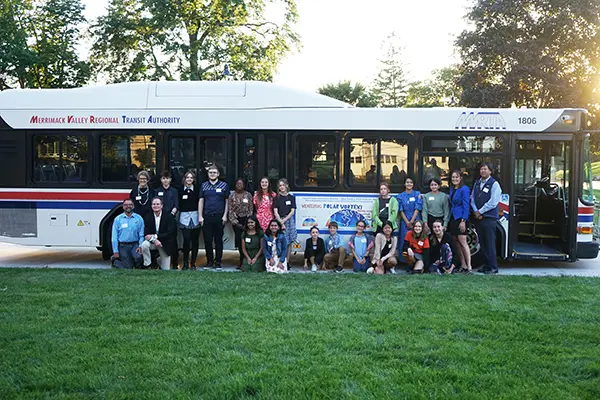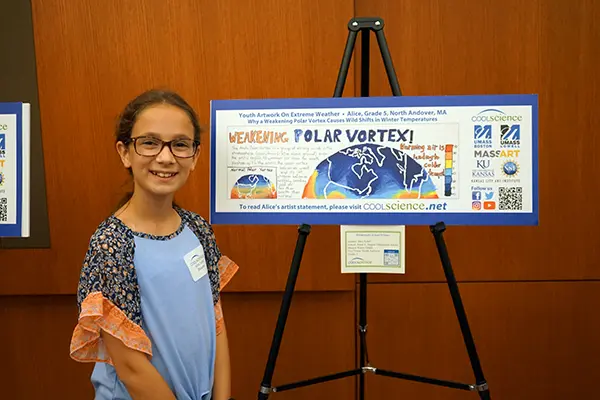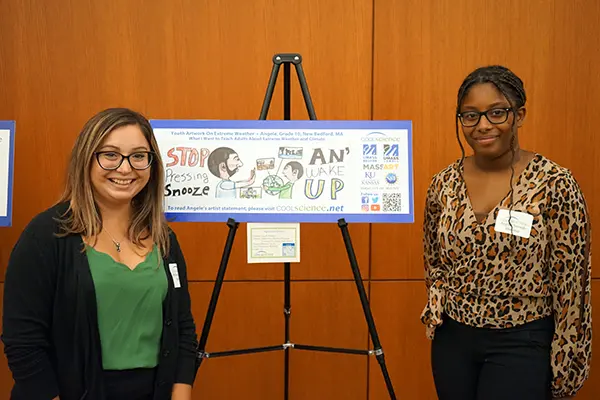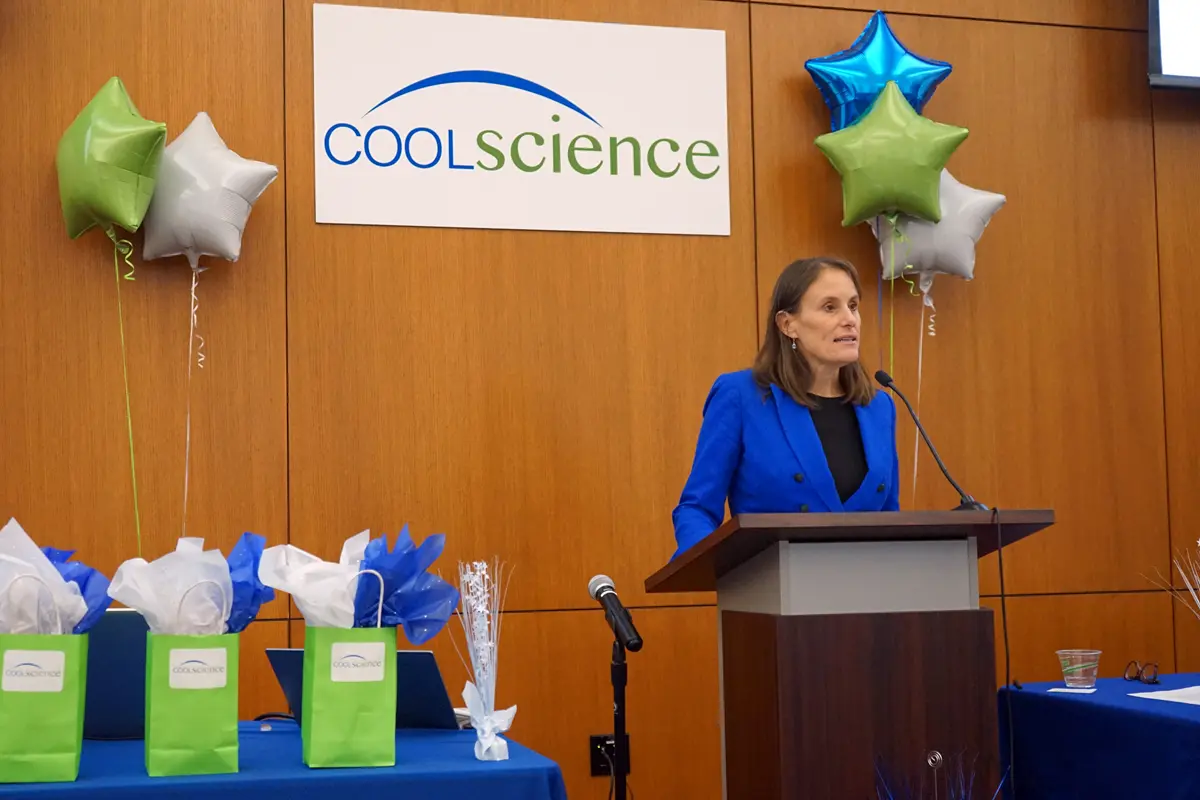Artwork Displayed on City Buses as Part of NSF-Funded Project ‘Cool Science’
 Image by Brooke Coupal
Image by Brooke Coupal
09/21/2022
By Brooke Coupal
When commuters board a city bus in the Merrimack Valley or Worcester area, they are met with mini-science lessons created by a dozen local students.
The students, who range in grades from kindergarten through 12th, are the winners of the 10th annual Cool Science Extreme Weather Art Competition. Cool Science is a National Science Foundation-funded project that studies how children’s art can informally educate the public about climate science.
“We find that adults are pretty receptive to spending time looking at kids’ artwork,” says Jill Lohmeier, department chair of the School of Education and a lead researcher of Cool Science. “It’s a way to reach adults so they can continue learning about science.”
During a celebration ceremony held at Coburn Hall on South Campus, sixth-grader Alice Lobel saw her winning artwork displayed on the side of a Merrimack Valley Regional Transit Authority bus. The North Andover resident chose to paint a polar vortex that became weak as warm air from the south pushed up toward the Arctic, causing colder air to move further south than is historically typical.
 Image by Brooke Coupal
Image by Brooke Coupal
“While researching and making my poster, I learned about how polar vortexes are beginning to become more unstable from the hotter temperatures in the south, and how over the next couple years, they could change the temperatures in some places dramatically,” says Lobel, who submitted her artwork while in fifth grade at Annie L. Sargent Elementary School in North Andover.
Lobel says she hopes to make a difference with her art.
“I’m happy that other people are going to see it, and it can influence them to help stop climate change,” she says.
 Image by Brooke Coupal
Image by Brooke Coupal
“My drawing is of a father handing down a broken Earth to his son, which shows that adults push the problem of climate change away, and now kids have to deal with it,” Semedo says. “I hope people learn that they can't keep putting climate change on hold and that they need to jump into action.”
Semedo’s drawing, which she titled “Stop Pressing Snooze An’ Wake Up,” will be displayed on the inside and outside of Worcester Regional Transit Authority buses. The winning artworks will remain on transit buses in the Merrimack Valley and Worcester areas for three months.
Researchers with Cool Science surveyed riders before the posters were installed on the buses to see how much they knew about the different science topics that the posters depict. The riders will be surveyed again after the posters are removed to assess whether they gained additional knowledge on those topics.
 Image by Brooke Coupal
Image by Brooke Coupal
“We continually find that riders' awareness of the science topics increases significantly after the posters are on the buses,” says Lohmeier, who adds that hundreds of thousands of bus riders have seen children’s artwork on climate science through this project over the past 10 years.
State Rep. Vanna Howard, of the 17th Middlesex District, attended the celebration to congratulate all the young artists on their impactful work.
“You see the urgent need to address the climate crisis,” she said. “Our future is brighter because of these young folks.”
“My hope is in addition to the science you have learned as part of this project, you, more importantly, have learned that you have a voice and adults will listen to it,” Lohmeier said at the event. “Use your voice to speak about what you learned and what matters for our world.”
Cool Science also runs its annual art competition in the Midwest, where students’ extreme weather artwork is displayed on public transit in Topeka, Kansas, and Kansas City, Missouri.
The project’s 11th annual Extreme Weather Art Competition is now open. Students can learn more about the competition and how to submit their artwork by visiting the Cool Science website.


